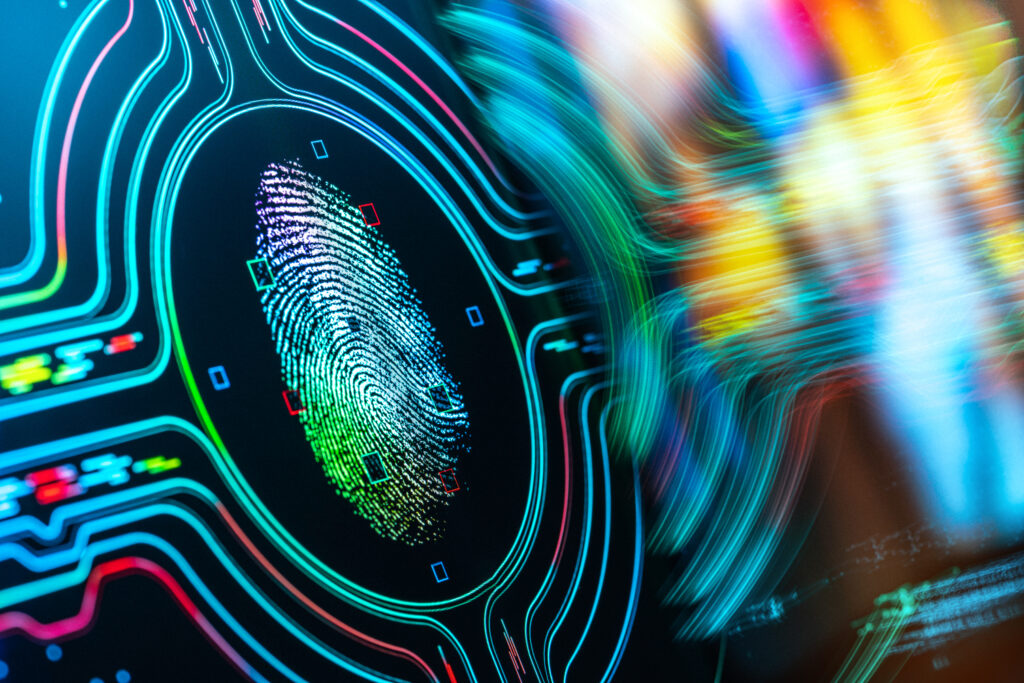
In today’s hyperconnected world, where data is the lifeblood of organizations, and cyber threats loom larger than ever, cybersecurity has become a critical concern for businesses, governments, and individuals alike. With data breaches and cyberattacks making headlines regularly, governments and regulatory bodies have stepped in to establish cybersecurity regulations designed to protect sensitive information, uphold privacy rights, and ensure the overall security of digital ecosystems.
Below, we will explore the need for cybersecurity regulations, the key players involved, and the various regulations and standards that have been enacted or proposed on both a global and regional scale. We will also examine the challenges and opportunities these regulations present to businesses, and provide practical insights on how organizations can navigate the intricate web of compliance requirements.
The Digital Age Dilemma
The digital age has ushered in unprecedented opportunities for innovation, communication, and economic growth. However, it has also brought about a new era of threats, where the click of a mouse can expose an organization’s most sensitive data to malicious actors halfway around the world. The cyber landscape is rife with malware, phishing attacks, ransomware, and other forms of cybercrime that can cripple businesses, compromise personal data, and even jeopardize national security.
Given the gravity of these threats, governments and regulatory bodies have recognized the need for cybersecurity regulations to mitigate risks and protect the digital infrastructure that supports modern society.

The Separation of Regulations
Cybersecurity regulations are not a one-size-fits-all solution but rather a finely tuned mechanism that seeks to strike a balance between fostering innovation and safeguarding critical systems and sensitive information.
These regulations set the rules of engagement in the digital realm, ensuring that organizations adhere to security best practices, prioritize data protection, and act responsibly in the face of ever-evolving cyber threats.
Global and Regional Initiatives
The cybersecurity regulatory landscape is a patchwork of global and regional initiatives. At the global level, organizations like the United Nations and INTERPOL play a role in promoting international cooperation on cybersecurity matters. The United Nations has adopted the “Group of Governmental Experts (GGE)” reports, which offer recommendations on responsible state behavior in cyberspace.
On the regional front, entities such as the European Union (EU), the Association of Southeast Asian Nations (ASEAN), and the African Union (AU) have all developed cybersecurity frameworks and regulations tailored to their specific regions. In the EU, the General Data Protection Regulation (GDPR) has had a profound impact on data protection and privacy, setting a precedent for other regions to follow.
National Regulations and Compliance Frameworks
At the national level, individual countries have enacted their cybersecurity regulations and compliance frameworks. The United States, for example, has the Cybersecurity and Infrastructure Security Agency (CISA), which is responsible for safeguarding critical infrastructure and coordinating cybersecurity efforts at the federal level. The U.S. has also introduced legislation such as the Cybersecurity Information Sharing Act (CISA) to encourage public-private collaboration in threat intelligence sharing.
Other countries have taken different approaches to cybersecurity regulation. China has established the Cybersecurity Law, which focuses on data protection, while Singapore has the Cybersecurity Act, emphasizing critical infrastructure protection and incident response.
Industry-Specific Regulations
In addition to general cybersecurity regulations, many industries are subject to sector-specific rules and standards. The financial sector, for example, must comply with regulations like the Payment Card Industry Data Security Standard (PCI DSS) and the New York Department of Financial Services (NYDFS) Cybersecurity Regulation. Healthcare organizations must adhere to the Health Insurance Portability and Accountability Act (HIPAA) for patient data protection.
These industry-specific regulations often come with stringent requirements for data protection, encryption, incident reporting, and more. Organizations operating in these sectors must invest in robust cybersecurity measures and compliance programs to meet these standards.

The Compliance Conundrum
Navigating the complex web of cybersecurity regulations presents a considerable challenge for businesses. Compliance requirements can be overwhelming, and non-compliance can result in severe penalties, reputation damage, and legal consequences. To address these challenges, organizations must take a proactive approach to cybersecurity and compliance.
- Risk Assessment: Start by conducting a comprehensive risk assessment to identify potential vulnerabilities and threats specific to your organization. Understanding your unique risk profile is crucial for prioritizing cybersecurity efforts.
- Compliance Frameworks: Familiarize yourself with the relevant cybersecurity regulations and standards that apply to your industry and region. Create a compliance framework tailored to your organization’s needs, ensuring alignment with regulatory requirements.
- Data Protection: Implement robust data protection measures, including encryption, access controls, and data classification. Ensure that sensitive data is stored and transmitted securely to comply with data protection regulations.
- Incident Response Plan: Develop a robust incident response plan that outlines procedures for identifying, reporting, and mitigating cybersecurity incidents. Regularly test and update this plan to ensure its effectiveness.
- Employee Training: Invest in cybersecurity training and awareness programs for employees. Human error is a significant factor in cybersecurity incidents, and well-trained employees can be your first line of defense.
- Third-Party Vendors: Assess the cybersecurity practices of third-party vendors and service providers. Ensure that they meet the same compliance standards you adhere to, as their security practices can impact your organization.
- Continuous Monitoring: Implement continuous monitoring and auditing of your cybersecurity controls to detect and remediate vulnerabilities and non-compliance issues promptly.
5 Cybersecurity Regulations that are Impacting the Digital Domain
1. GDPR: Protecting Data Privacy
General Data Protection Regulation (GDPR), enacted by the European Union (EU), has been a game-changer in the realm of data protection and privacy. GDPR’s reach extends far beyond the EU’s borders, impacting any organization that processes the personal data of EU citizens. It has fundamentally altered how companies handle and safeguard personal data, making data protection a global priority.
Under GDPR, organizations must:
- Obtain explicit consent for data processing.
- Appoint Data Protection Officers (DPOs).
- Implement data protection impact assessments.
- Report data breaches within 72 hours.
- Allow individuals to access and control their data.
Non-compliance can result in substantial fines, reaching up to €20 million or 4% of a company’s global annual revenue, whichever is higher. GDPR has forced organizations worldwide to adopt stringent data protection practices, including encryption, access controls, and privacy impact assessments.

2. CCPA: Ushering Privacy Regulations in the U.S.
The California Consumer Privacy Act (CCPA), effective since January 1, 2020, has catalyzed a shift in the United States towards stronger data privacy regulations. It grants California residents more control over their personal information, with rights to know what data is collected and the ability to request its deletion.
CCPA applies to businesses that:
- Have annual gross revenues exceeding $25 million.
- Buy, sell, or share the personal information of 50,000 or more consumers.
- Derive 50% or more of their annual revenue from selling consumers’ personal information.
Organizations subject to CCPA must implement mechanisms for consumers to exercise their rights, including data access and deletion. Failure to comply can lead to substantial fines and legal consequences.
3. NIST: A Framework for Cybersecurity
The National Institute of Standards and Technology (NIST) Cybersecurity Framework is a voluntary framework developed by the U.S. government to help organizations manage and reduce cybersecurity risk. Although not a regulation in itself, it has become a de facto standard for many industries.
NIST’s framework comprises five core functions:
- Identify: Understand and manage cybersecurity risks.
- Protect: Implement safeguards to secure data and systems.
- Detect: Continuously monitor for cybersecurity incidents.
- Respond: Develop an incident response plan.
- Recover: Restore services and data after an incident.
Many organizations adopt NIST’s framework to improve their cybersecurity posture voluntarily, while some industries, such as critical infrastructure providers, are required to follow NIST guidelines.
4. HIPAA: Safeguarding Healthcare Data
The Health Insurance Portability and Accountability Act (HIPAA) sets the standard for protecting sensitive patient data in the healthcare industry in the United States. HIPAA regulations include the Privacy Rule, Security Rule, and Breach Notification Rule, all aimed at safeguarding patient information and ensuring its confidentiality, integrity, and availability.
HIPAA requires healthcare organizations to:
- Implement safeguards to protect electronic Protected Health Information (ePHI).
- Train employees on security practices.
- Conduct regular risk assessments.
- Report data breaches promptly.
Violating HIPAA can lead to severe penalties, ranging from fines to criminal charges. Healthcare providers must invest heavily in cybersecurity measures, including encryption, access controls, and auditing, to remain compliant.

5. FINRA and SEC: Regulating Financial Firms
The Financial Industry Regulatory Authority (FINRA) and the U.S. Securities and Exchange Commission (SEC) have implemented stringent regulations to safeguard financial firms and their clients from cyber threats. These regulations require financial institutions to establish comprehensive cybersecurity programs, conduct risk assessments, and report cyber incidents promptly.
Under FINRA and SEC regulations, financial firms must:
- Develop and maintain written cybersecurity policies and procedures.
- Implement data protection measures.
- Conduct regular vulnerability assessments.
- Provide cybersecurity training to employees.
- Create an incident response plan.
Non-compliance can result in significant penalties and reputational damage in the highly regulated financial industry.
The Future of Cybersecurity Regulations
As technology evolves and cyber threats continue to escalate, the landscape of cybersecurity regulations will undoubtedly evolve. Emerging technologies like artificial intelligence (AI), the Internet of Things (IoT), and quantum computing pose new challenges and opportunities for regulators.
In the future, we can expect:
- Stricter regulations to address emerging threats.
- More comprehensive data breach notification requirements.
- Increasing international cooperation on cybersecurity standards.
- Regulations specifically tailored to AI and IoT security.
- Greater focus on supply chain cybersecurity.
Organizations must stay vigilant, adapt to evolving regulations, and invest in robust cybersecurity measures to protect sensitive data, uphold privacy rights, and ensure compliance with a dynamic and complex regulatory landscape.
Compliance is no longer a choice; it’s a necessity in the digital age.




